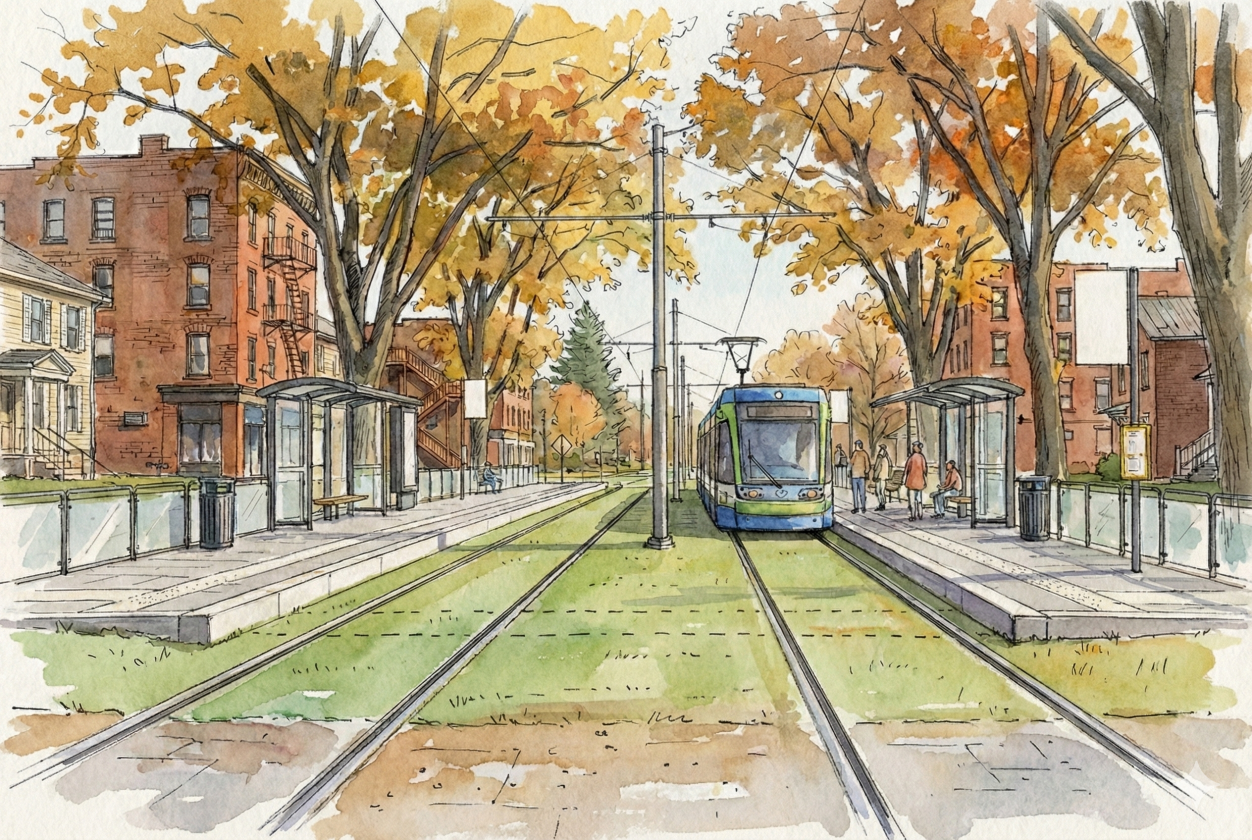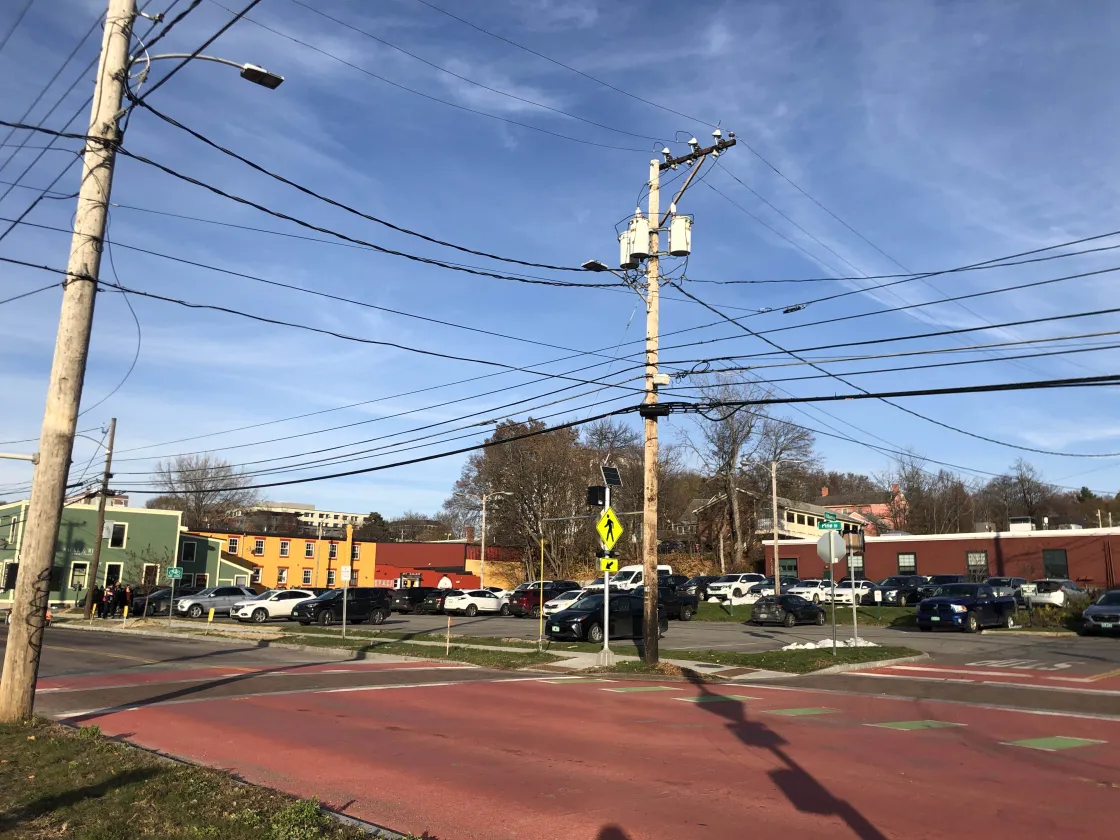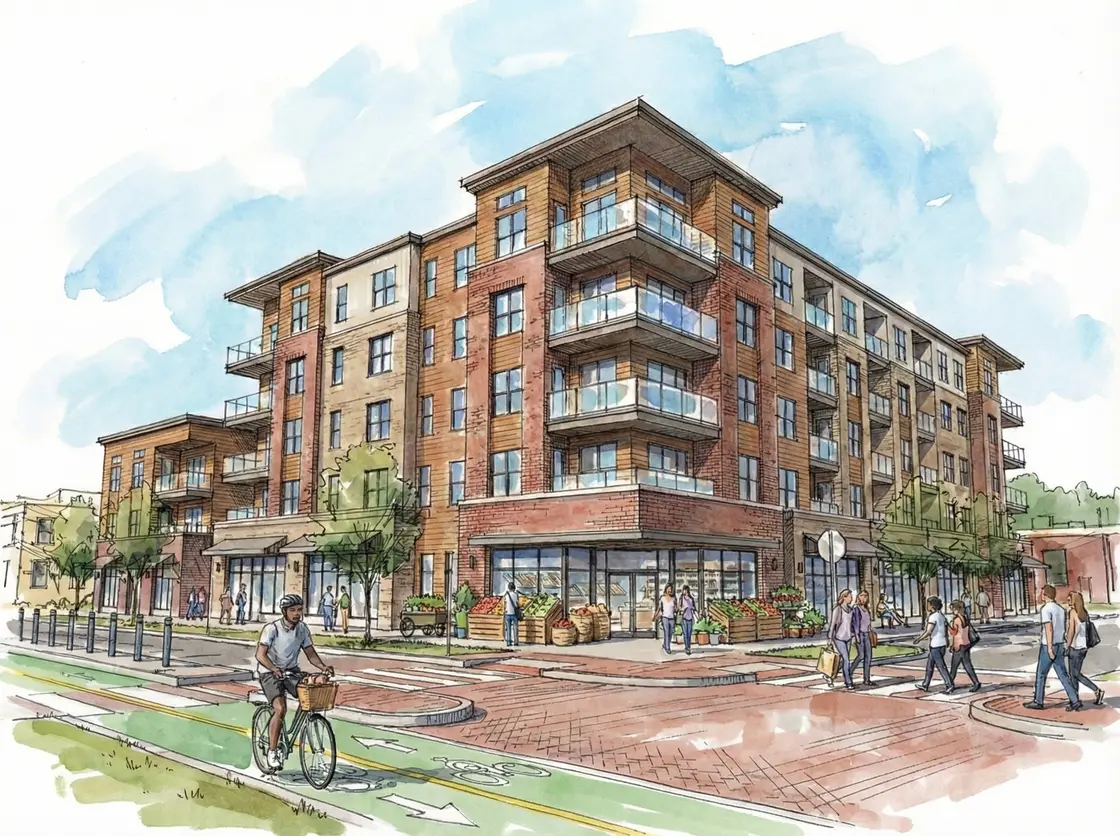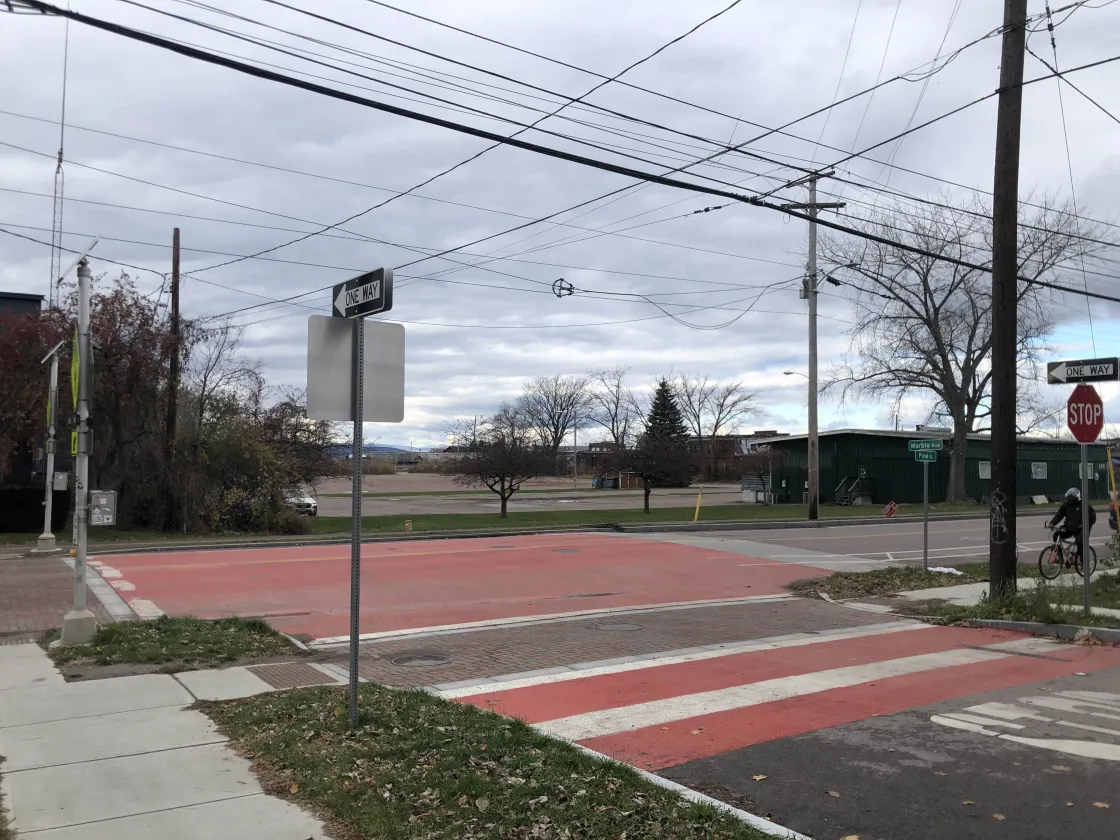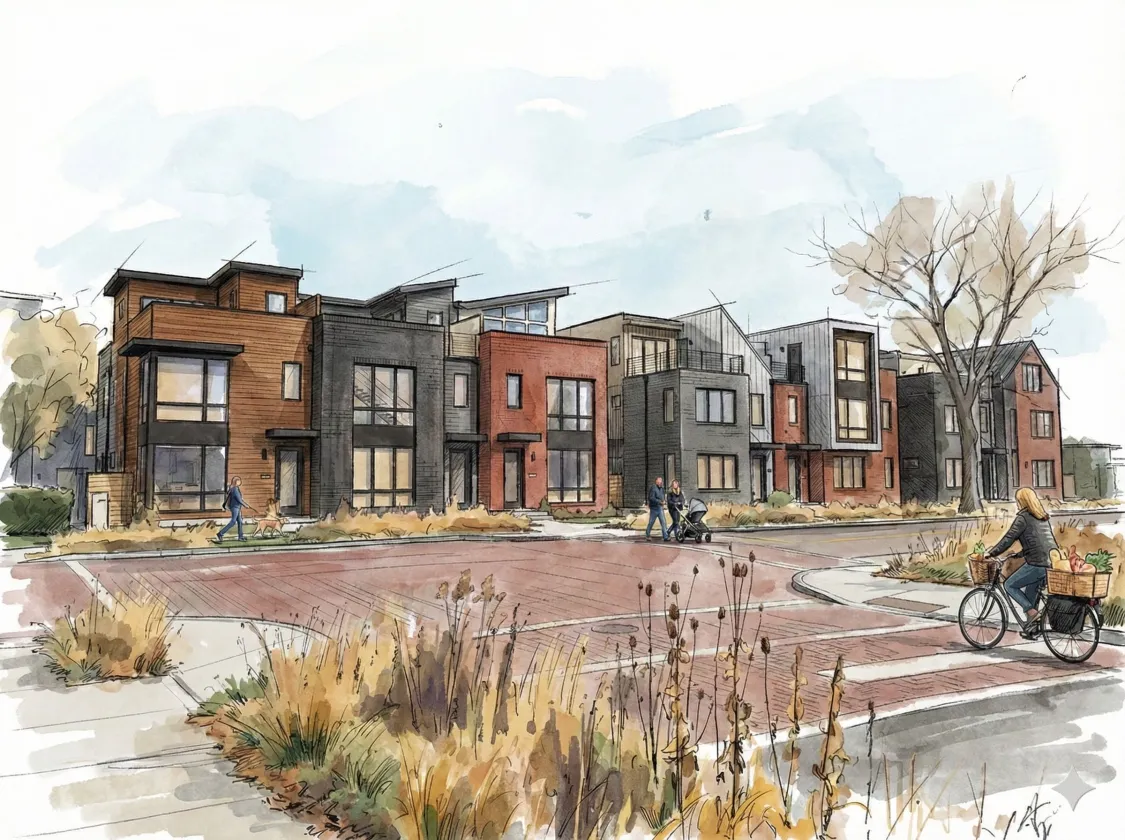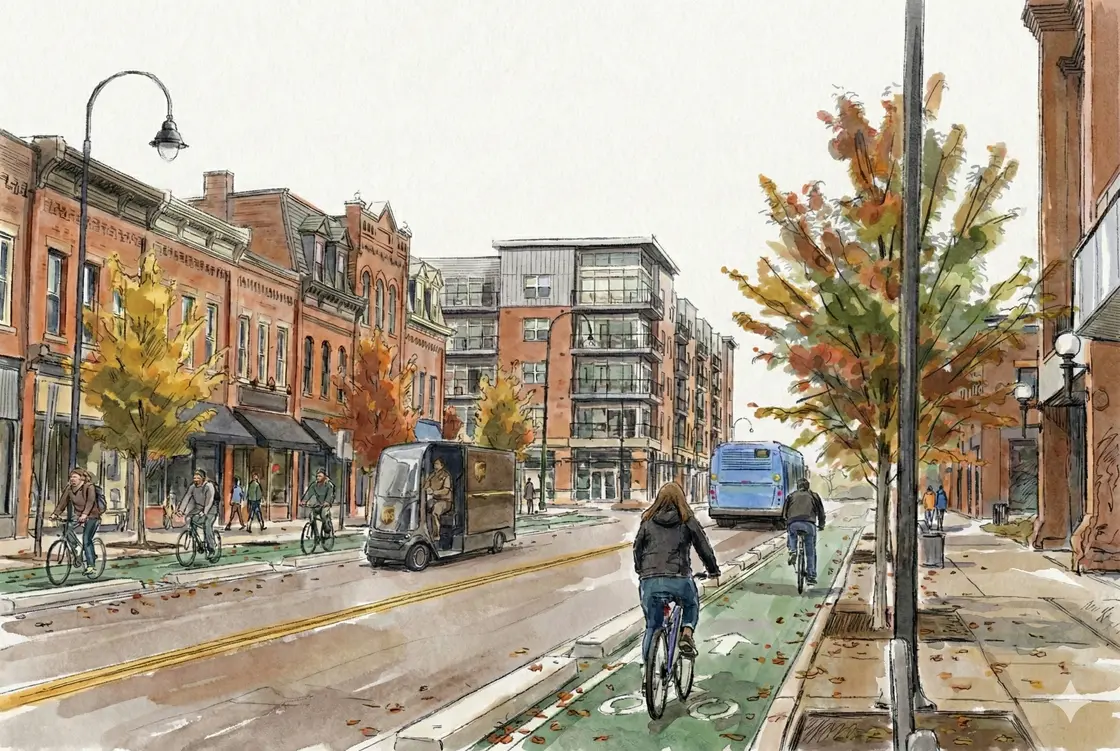Visualizing a More Developed Burlington
Burlington can still fit a lot more high quality places inside of it. Every new development has the possibility to bring more neighbors, more businesses, more workers, more tax revenue, more culture, and—if we target unproductive parking lots and other car-dependent infrastructure—even more environmental benefits and ecosystem services. This isn't an either-or, but a both-and situation. This page shows some visual examples of what there's still room to achieve in Burlington.
A recurring, intentional theme in these images is that they depict high-quality urban life, where mobility and transit are central, and people-oriented neighborhood life is omnipresent. While you might notice how nice these images feel (and while you may pick up on this in juxtaposition to the "before" pictures) the primary functional difference of the "after" photos is that there are no cars. If you look closely—or if you close your eyes and imagine it—you'll notice that life goes on, and that people are still getting where they need to go and enjoying their life. It can be hard to visualize what a car-lite (i.e. multimodal) future would look like, so I'm doing it for you. There's less noise, danger, and pollution, and there's more places to go, more things to do, more people to meet, and more money in those people's pockets.
A Note on AI
These renderings were made by using Google Gemini image generation to augment photographs I took. There's a lot you can say about AI and the impact it is having and will have on the world. Most of the environmental critiques are not actually about AI, but about modern data centers. If you watch YouTube videos, or use Zoom, you're consuming a lot more electricity and water than running AI prompts. This is because, in a global sense, the electricity and water demand for computation is actually much, much, much lower than other sectors like construction or agriculture. It's "a lot" in an abstract sense, compared to daily personal consumption of those resources for an individual, but the resource impact of our computational consumption is literally the last thing we should worry about. Skipping a single cheeseburger or taking the bus instead of driving has an order of magnitude (or two) more benefit to reducing resource consumption than not asking ChatGPT a question.
Anyhow, that's not to say that usage of a tool is a blind endorsement of all applications. But I do believe this use case has a lot more pros than cons. To be able to provide high quality visuals for my neighbors to get excited about and rally around for deeply positive change in our city is worth the few dollars of electricity and few ounces of water it cost. The alternative was to spend months of my free time mapping, modelling, and rendering these visuals. It certainly would have cost a lot more electricity and water to do it that way. I also probably never would have finished it—I know this because I have tried many times over the past few years to make visuals just like this, but could not finish them because of the time and effort it took. Not because I'm incapable of making them without AI either; I have a degree in game design, and experience with modeling and redering 3D environments. I know some people feel like this is a cop-out, but a tool is a tool. Sometimes the process is the point. Sometimes the outcome is more important. All of this to say that everything costs something, and I think this was a really good deal.
Finally, there's the issue of creative intent. These images use an "architectural mockup" style, which indeed was trained on the creative output of a lot of other people, probably nearly all of them without credit, consent, or compensation. That's a bummer, and the most morally grey area of this project. Though, my prolific body of writing, images, and code that has been posted freely to the internet was also used to train these models. "An eye for an eye makes the whole world blind", but none of us creators are doing the eye gouging. I orginally rendered these as photographs, but the minor "AI-smooshed-together" details were distracting for people trying to get the impression of the image. I'm also 1) not falsely claiming that these are original works of art, and 2) not really claiming these as works of art at all. I'm not trying to impress you with an image that is "stolen", but to communciate the idea of what is in the image itself. The process of creating these images was nuanced and detailed, guided by several years of deep experience in the world of planning, land use, urban design, and architectural studies. The prompting process was not just "take this picture of a parking lot and put an apartment building on it", but a layered approach of incrementally redeveloping the space in accordance with good urban planning principles.
Separately, this could hopefully be a starting point for a larger conversation. If you are an artist who would like to do a proper human depiction of these ideas, or if you are a person who has money to pay an artist to do a proper human depiction, I'd be happy to make that connection. It would be amazing if these quick AI sketches could inspire a community visioning session that resulted in raising money and paying local artists to visualize what our neighborhoods could look like in the future. But it's also a catch-22; it would be really difficult to convince people to pool money for this kind of thing without an example of what it would actually result in. And so here is that starting point. If it inspires something that puts money in local artist's pockets, great! If it doesn't, then there were never going to be artists getting paid anyway. This doesn't all have to be a zero sum game.
It's okay if even after this explanation of where I'm coming from here still doesn't land for you. I still hope you'll look at these images and get excited about the possibility behind them, and all of the electricity, water, and natural space they'll conserve if the vision is realized, and the amount of economic and cultural growth that would come from a Burlington that looks more like these images, and then join me in working towards bringing them to life.



